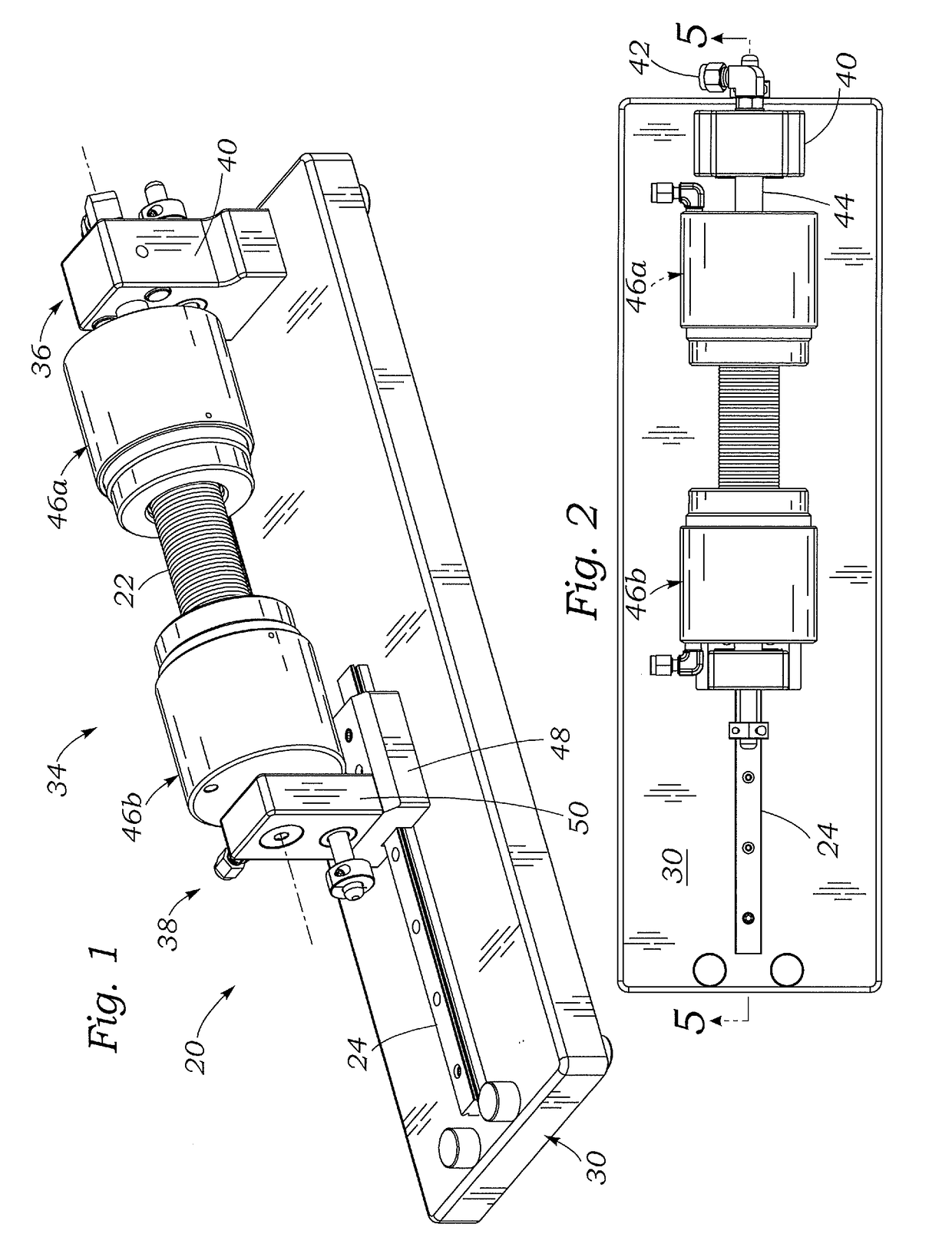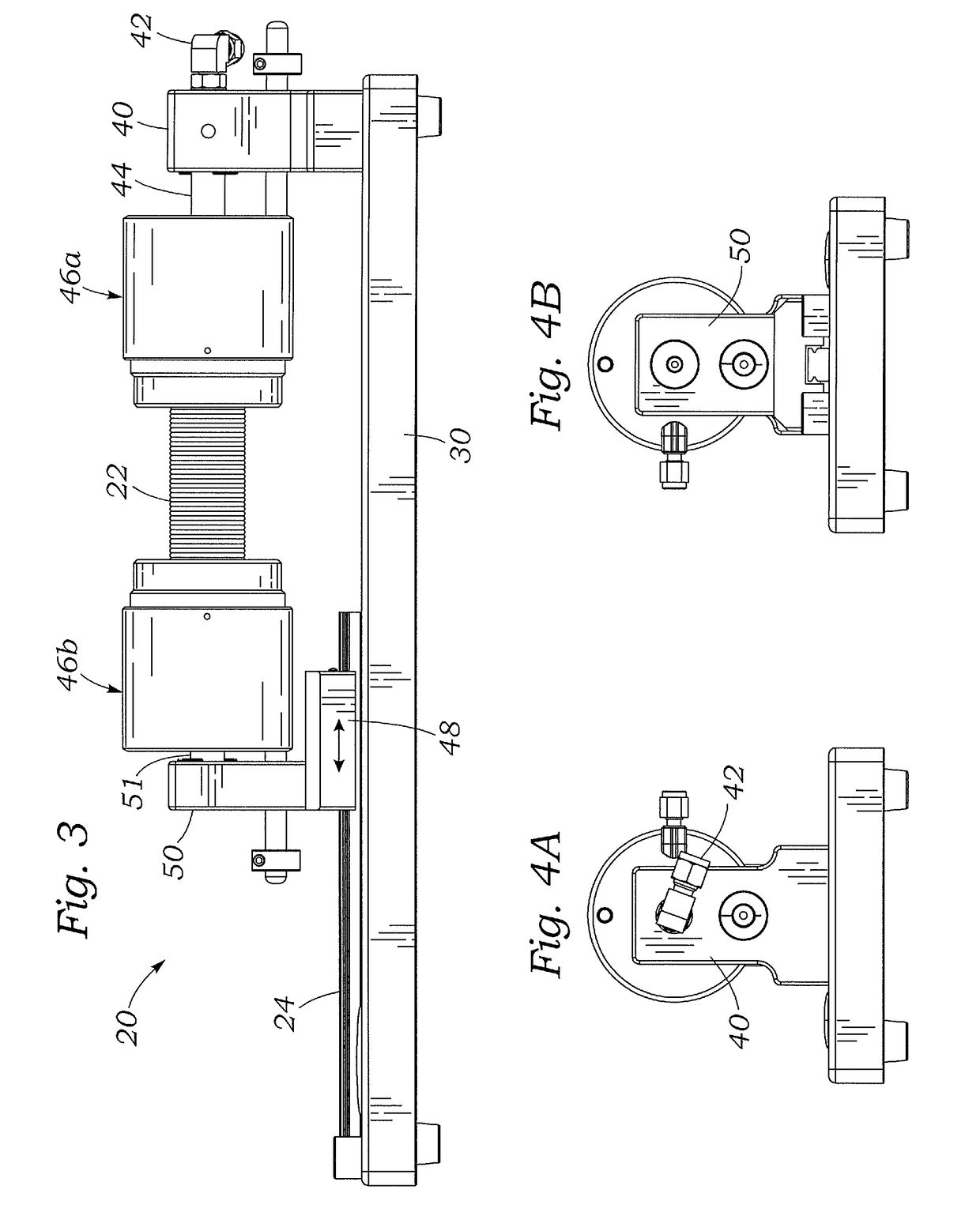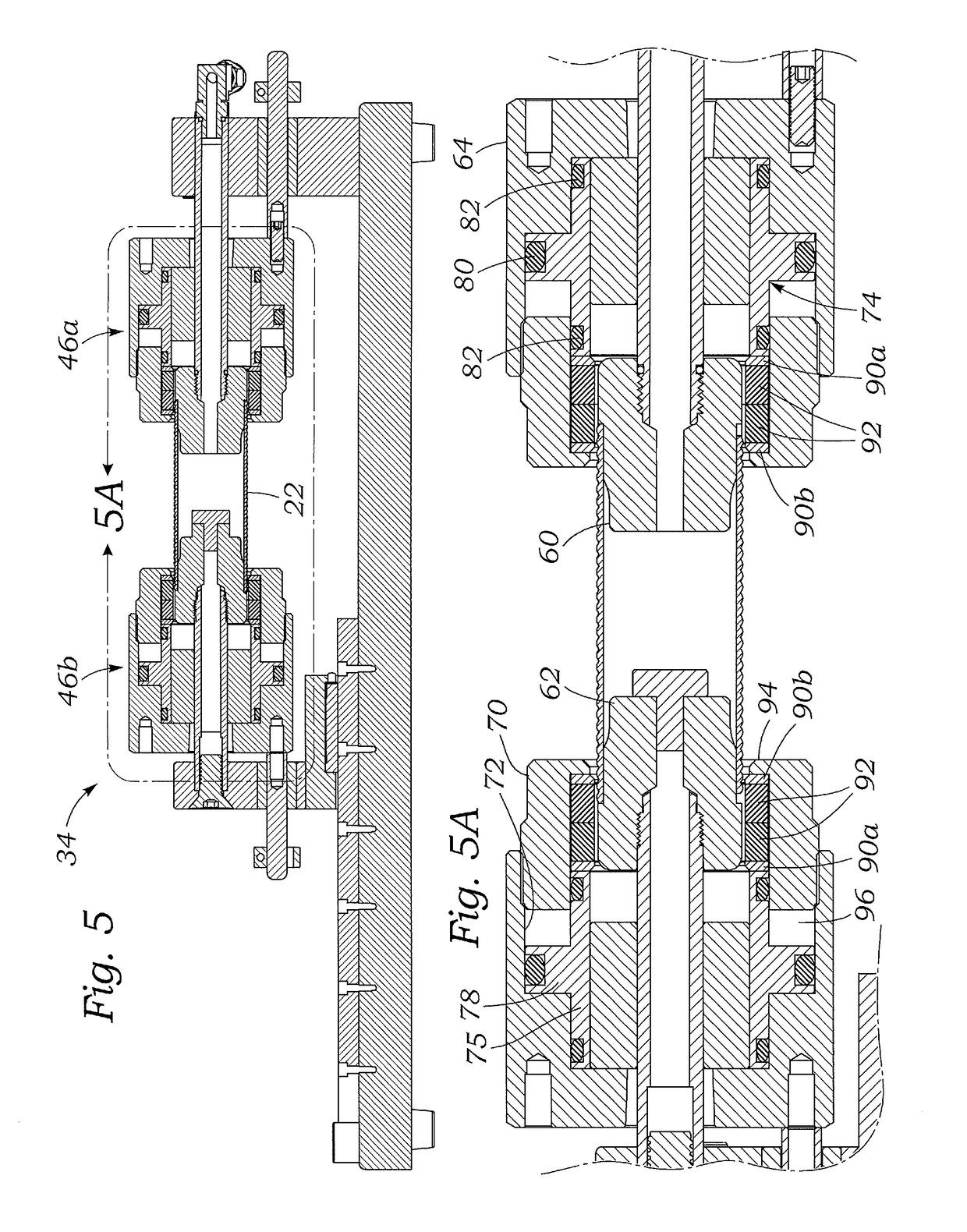Methods of leak testing a surgical conduit
a surgical conduit and leakage detection technology, applied in the direction of measurement devices, structural/machine measurement, instruments, etc., can solve the problems of high leakage rate, grafts still producing unacceptable leakage, and the thickness of the layered conduit is relatively thick and not very flexible, so as to reduce the handling of the two treated components and reduce assembly complexity.
- Summary
- Abstract
- Description
- Claims
- Application Information
AI Technical Summary
Benefits of technology
Problems solved by technology
Method used
Image
Examples
Embodiment Construction
[0029]The present application discloses several systems for leak testing surgical conduits or grafts using a pressurized gas, such as air, as a testing fluid. In a preferred embodiment, pressurized air is the gas, although any gas that is non-destructive and non-reactive (inert) to the particular conduit being tested may be used, for example, oxygen, nitrogen, helium, argon, carbon dioxide, hydrogen, hydrocarbons, hydrofluorocarbons, fluorocarbons, fluorochlorocarbons, hydrofluorochlorocarbons and combinations thereof. As used herein, the term “air” includes all suitable gas test fluids, except where context indicates otherwise. The use of a gas instead of a liquid testing fluid can preserve the surgical conduit, which may comprise porous tubular structures such as woven polyester (e.g., DACRON® PET, Invista, Wichita, Kans.) impregnated with bioresorbable materials such as gelatin, collagen, and / or albumin. In contrast, leak testing with liquid testing fluids can destroy the efficac...
PUM
 Login to View More
Login to View More Abstract
Description
Claims
Application Information
 Login to View More
Login to View More - R&D
- Intellectual Property
- Life Sciences
- Materials
- Tech Scout
- Unparalleled Data Quality
- Higher Quality Content
- 60% Fewer Hallucinations
Browse by: Latest US Patents, China's latest patents, Technical Efficacy Thesaurus, Application Domain, Technology Topic, Popular Technical Reports.
© 2025 PatSnap. All rights reserved.Legal|Privacy policy|Modern Slavery Act Transparency Statement|Sitemap|About US| Contact US: help@patsnap.com



